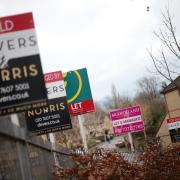With interest rates rising sharply and many landlords seeking to exit the buy-to-let sector, understanding how tax applies when selling rental properties is key. While your annual capital gains tax allowance shields the first slice of gains, residential property disposals can quickly trigger significant tax bills. So, grasping what costs you can offset against sale proceeds is essential to managing liabilities.
This guide summarises how to calculate capital gains for investment properties. We'll cover allowable costs for previously occupied properties, including enhancement expenditures and Private Residence Relief aspects.
Capital Gains Tax Basics
First, here is a quick recap on capital gains tax fundamentals. This 28% tax (or 20% for basic rate taxpayers) applies when you sell or 'dispose of' an asset for more than you originally paid. The difference between current market value and 'allowable costs' constitutes the taxable capital gain.
An annual exempt CGT allowance (£12,300 in the 2022/23 tax year) shields some gains tax-free for individuals each year. Losses on other assets can also offset gains in the same tax year. But for landlords exiting the sector, gains on additional properties are unlikely to fall under the allowance; hence, understanding reliefs is key.
Allowable Costs
When computing capital gains on property, 'allowable costs' that can help reduce the taxable amount include:
Purchase price
- This may include stamp duty and legal and other fees associated with the original acquisition.
Post-purchase improvement costs
- Enhancements like extensions, loft conversions or upgraded fixtures.
Incidental sale fees
- For example, solicitor and estate agency selling costs.
- Inherited or Gifted Properties
Special rules apply where properties were originally inherited, transferred between spouses, or received as gifts:
Inherited: The base 'cost' becomes the market value at the date of death.
Spouse transfers: Original base costs transfer over at no gain/no loss unless recipients make an election to trigger gain for the transferor.
Gifted: The Base cost is the market value when acquired/transferred unless it comes from a spouse, as above.
Rebasing Pre-April 1982 Assets
For properties acquired before 31st March 1982, allowable costs reset to market value at that date - if higher than originally paid. This avoids taxing purely inflationary gains in the early years of ownership.
Improvements v Maintenance
Care is needed to distinguish genuine improvement expenditure from everyday repairs and maintenance. While the former can provide allowable cost deduction against ultimate gains, regular upkeep spending cannot - even where big, accumulated bills are involved.
Part disposals & private residence relief
Where a property was formerly your main home before letting, Private Residence Relief scales back the taxable gain for time spent in residence on a time-apportioned basis. This exemption can eliminate all gains attributable to periods of occupying your own home.
For periods where property part business and part personal use overlapped, an accurate apportionment of allowable costs may be needed to calculate eventual taxable gain.
Accurately computing capital gains tax on property requires detailed records over sometimes long ownership periods. But methodically assembling allowable cost data, including enhancements wherever feasible, helps reduce eventual tax bills.
For previously lived-in homes, identifying qualifying periods for Private Residence Relief equally minimises tax dues. While disposing of buy-to-let properties rarely proves entirely tax-free, careful collation of deductible costs from purchase to sale significantly reduces liabilities and helps ease the pain of relinquishing cherished assets.


























